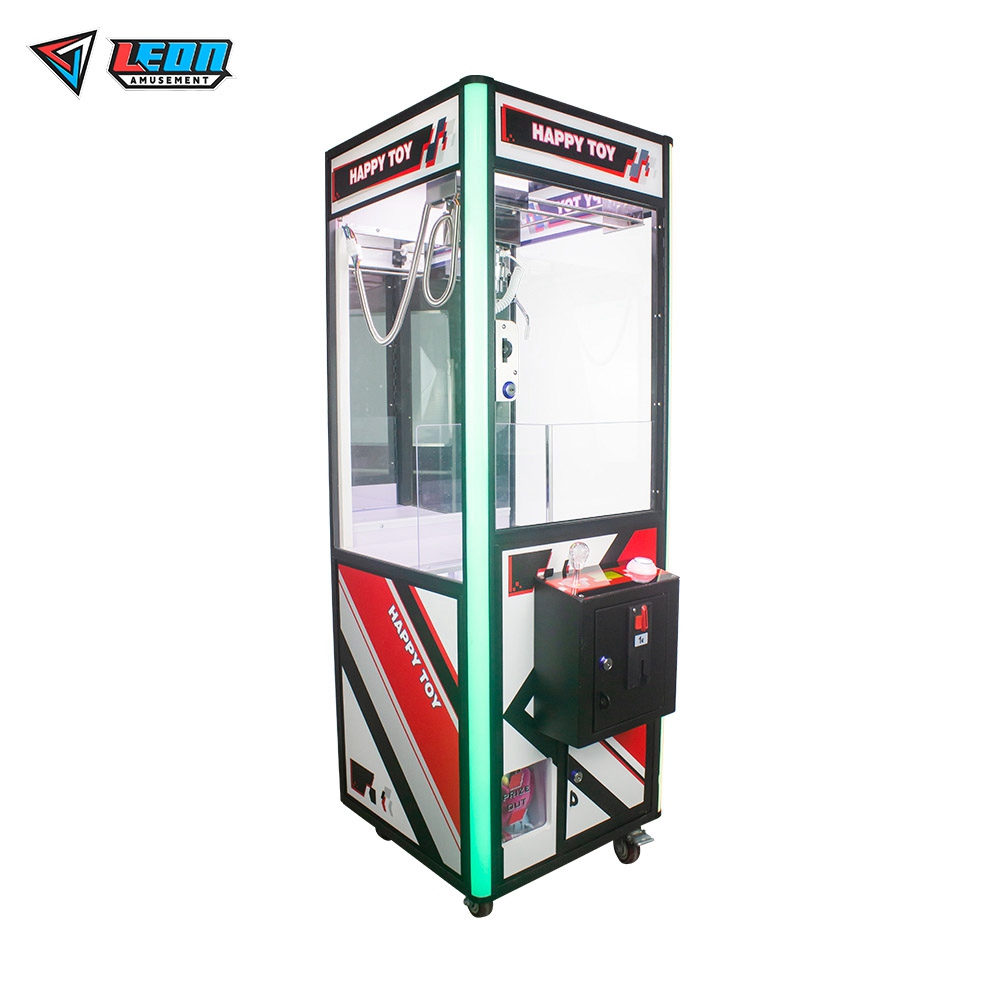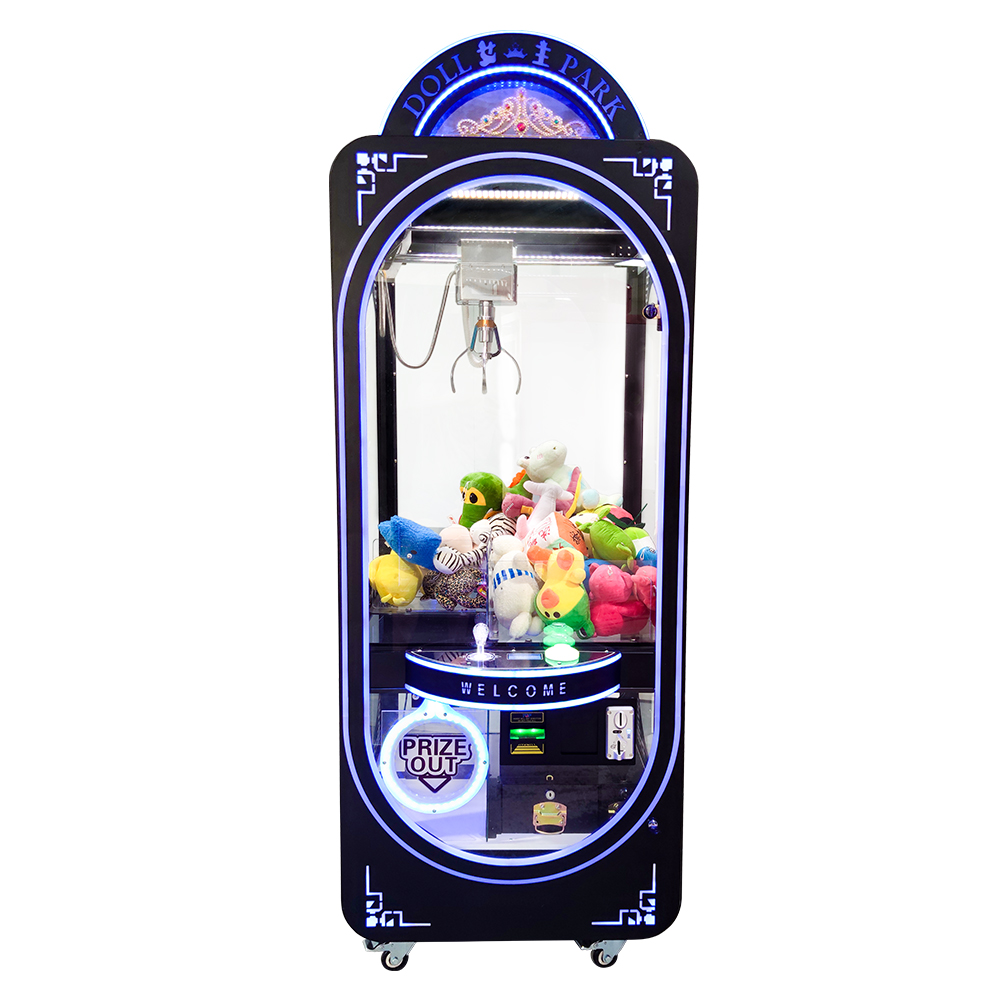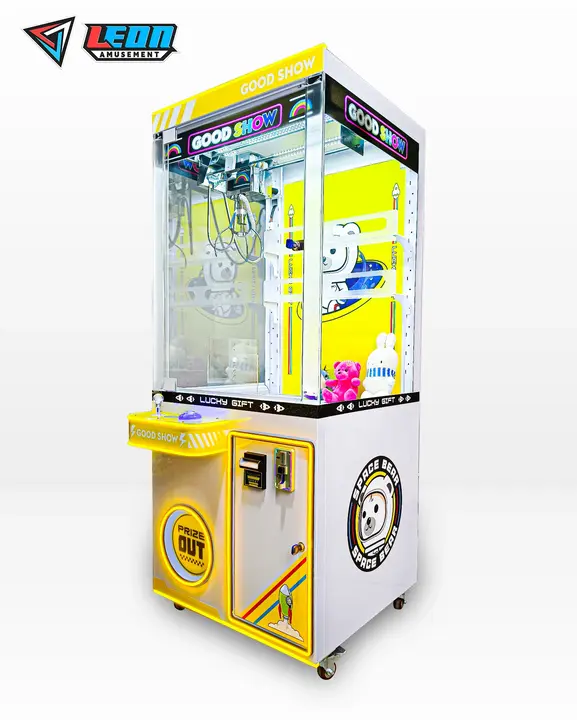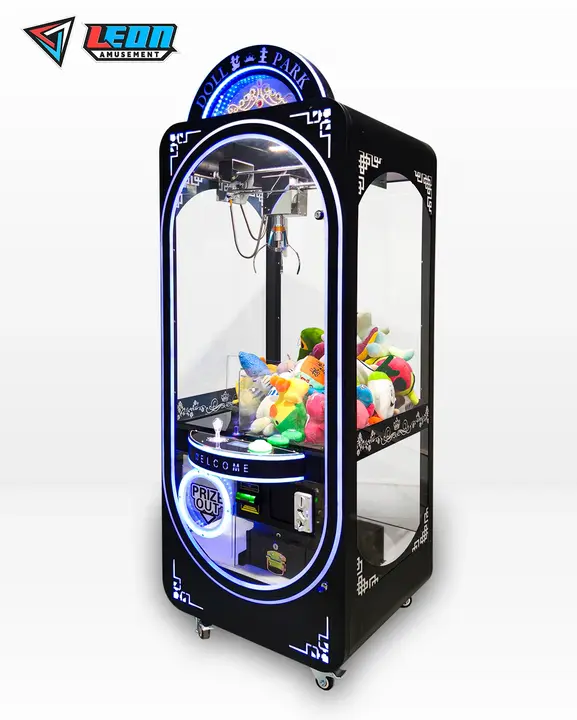Winning rates are influenced by claw strength (20% variance), machine settings, prize placement, and player skill (30% impact).
Table of Contents
ToggleQuality of the Claw Mechanism
Types of claw mechanisms
The mechanisms of various claw machines vary, and mainly determine what you need to win as well as reliability. Two-pronged claws, three-pronged claws, and four-pronged claws are common claws. Below is an example of a three-pronged claw, which is probably the roundest and can grip prizes of various shapes and sizes well. In contrast, a two-pronged claw may have difficulty picking up larger items, while a four-pronged claw is more efficient when handling smaller round objects. According to scientists: machines with three-pronged claws have a 20% advantage over two-pronged claw machines.
The impact of claw strength and grip
Grip is the key to winning. Claw strength can also be programmed to change during the game, with stronger grips being used less often to manage the number of prizes paid out. For example, a machine may only grip at full strength once in every ten attempts. According to data from industry reports, by adjusting the grip, 30% of operator costs can be saved while keeping players interested. Understanding these settings can be helpful for players, because playing the claw a few times can let you understand the pattern of grip changes.
Materials and Construction
Even the materials used for the claw mechanism can vary greatly. High-grade metals [like stainless steel] will provide your claw with the highest durability and the best overall grip consistency. According to a study by the National Amusement Machine Claw Association, stainless steel claws have a 15% longer grip than claws using cheaper alloys. Additionally, the quality of the construction can also affect how well the claw moves. Claws that are also precision-engineered with strong joints and as few moving parts as possible can also help reduce the risk of mechanical failure, thereby improving performance, which in turn can affect the well-known problem of robots always being unable to grasp again.
Maintenance and Wear
Maintenance is critical to ensure that the claw mechanism is functioning properly. The length of the legs on a machine has a 25% higher success rate for machines that are kept in good repair than for machines that are allowed to deteriorate. If you need help getting your claw machine to work properly, maintenance tasks may include lubricating moving parts, checking alignment on the claw arm, and ensuring that both claw springs are at the same tension. Operators performing scheduled preventative maintenance and quick repairs can greatly improve the player experience, leading to increased satisfaction and repeat play.

Machine Settings and Calibration
Payout Rates and Difficulty Levels
Claw machines typically have a programmed payout rate that controls the number of prizes that can be won. The payout rate determines how often the claw machine uses 100% of its force so that a prize can be won. For example, a machine might be programmed to deliver a strong grip only once in every 15 times. This setting is designed to allow the arcade to control costs while keeping players interested. Understanding the payout rate will help you as a player time your shots more effectively. Carefully observing how the machine works over multiple games can increase your chances of success while trying to beat the machine at your own game based on game conditions during the “payout” period.
Claw Grip Adjustment Frequency
Operators often adjust the claw grip (just as they do with grip strength) settings to maintain a balance between profitability and player satisfaction. The strength, speed, and timing of the claw’s grip can all be fine-tuned. For example, the claw might first hold the prize tightly but begin to rest lightly on the prize as it lifts, giving the feeling of a near-win. Players can get as many free games as they want with the magnet until the magnetic force no longer allows the ball to work as intended, making this game challenging enough to encourage players to try again and win more tickets. Industry reports state that typical machine modifications can increase player engagement by 10%, and increasing engagement with regular trading activities is currently part of an established, proven routine treatment practice or activity each week.
Sensor and Motor Calibration
The sensors and motors in the claw machine need a nudge from time to time to go from working “sometimes” to working “always”, so each claw machine requires precise tuning. The sensors regulate the claw’s trajectory and stopping point to align it with the prize. If the sensors are misaligned, your payout rate can be significantly reduced because the claw may not be properly placed over the prize, resulting in someone trying to illegally knock over the prize. The motors also need to be calibrated from time to time, otherwise they will not maintain the same speed and power. When the machine is finely tuned, it will run more efficiently and will be much less likely to break down in the heat of battle, improving the player experience. To keep the equipment running at optimal levels, operators perform calibrations on a monthly basis.
Impact of Software Updates
Today, many claw machines come with a ton of features, including some core settings and options, which are managed by software. With software updates, new features can be introduced, settings can be changed, and even some bugs that may affect the performance of the machine can be fixed. For example, an update may help the claw adjust the power output of its grip or sensor calibration. Ensuring that the machine operates properly and provides a decent, enjoyable experience for players (even if that experience makes the casino lose money) is why the software should always be kept up to date. With machines using the latest software versions experiencing a 15% increase in uptime and fewer service issues, the data clearly shows that there is a benefit in migrating to emerging software and technologies that can help reduce maintenance schedules.
Placement and Size of Prizes
The Effect of Prize Size and Weight
The payout rate of a claw machine depends on the size and weight of the prize. The larger and heavier the prize, the heavier the prize, and the harder it is to lift and handle. According to research from the amusement industry, the win rate of lighter prizes is up to 25% of that of larger prizes. The smaller the prize that the claw machine is trying to grab, the greater the chance that the prize will stay in the claw machine’s hand. Those who go for smaller prizes may even find that their chances of winning are slightly better if they find a difference in the strength of the claw machine.
Prize placement strategies adopted by operators
Operators place prizes in this way to reduce the difficulty of the game. They tend to place prizes that are harder to win near the edges or corners of the machine, because the claw machine may not be able to reach them. Center prizes, on the other hand, are easier to get. The survey of arcade operators also found that 60% of operators explicitly stated that they place higher-value prizes in harder-to-reach places to balance their prize payouts. Understanding these placement strategies can help players choose their targets more wisely, making it more likely that they will successfully obtain the prize.
Prize Setup and Stacking
How the prizes in a claw machine are sorted and stacked also determines the win rate. More tightly packed or stacked prizes are inherently challenging, as it can be difficult for the claw to cleanly grab a single item. With a random pairing method, individual prizes are more accessible, and the lack of real teams means that even if you are on a team with a giant, you won’t be taken away. A study by the Amusement and Music Operators Association (AMOA) found that machines with dispersed prize pools had a 30% higher win rate than machines with dense prize pools. This is also good for their customers, because they have to look for this type of machine, which tends to spread the prizes out, so it helps to unlock multiple items that may be trapped.
Aesthetics and Immersion
Visual appeal can also change player behavior and king ratings, and helplessness helps commoditize prizes… Operators often seed higher value and more complex prizes at the beginning of the game to increase player awareness. From player behavior patterns, fancy prizes increase the odds of players entering the game by 40%, even if they don’t actually increase the chance of winning. When players know these dirty psychological tricks, they can avoid the potential pitfalls of chasing after tempting but demanding prizes.

Player Skill and Strategy
Importance of Targeting Specific Prizes
Choose specific prizes to target prizes, and those prizes will be won more often. Thieves continue to be smart, as veteran players are often very interested in prizes and want simpler, less difficult prizes to handle, avoiding long stress or poorly placed candy baskets. Studies have shown that fighters who choose specific strategic targets are 30% more likely to score than those who casually aim for any prize placed in front of the compass. Players become claw experts – the claw – a child’s version of the claw in Toy Story, but by focusing on items that are only partially exposed and not surrounded by other prizes, players can increase the likelihood of winning prizes.
Precise Control and Timing Techniques
Ultimately, success equals understanding the control and timing of the claw machine. The best players often employ a strategy called “jogging”, gently pushing the joystick to move the claw slowly, getting the prize closer and closer to the chute. In addition, timing will also play an important role. Releasing the claw at the right time, especially when the claw’s grip is at its strongest, can significantly increase your win rate. It can be trained to complete specific tasks more effectively, which requires precise control and watching what the claw is doing.
Observe and Identify Patterns
This is very basic player strategy because it relies primarily on observation. Experienced players spend a lot of time observing how the machine plays before they lose at the first session. They are looking for reproducible patterns in the claw’s grip, movement speed, and frequency of prize payouts. By spotting these patterns, players can know the best times to play the game. Likewise, if a machine seems to be in a low grip cycle, it would be wise to wait until it resets to a higher grip. According to the data, players who observe and recognize patterns may increase their win rate by about 20%.
When and How to Practice
For any claw machine beginner, practice is the key to improving your ability to play the claw machine. If you practice regularly, it will provide players with a basic knowledge of different types of machines and options, as well as how to maintain proper control and timing skills. A poll conducted by the Arcade Players Association showed that players who tend to practice specific skills regularly have a 25% higher win rate. Of course, jumping from one machine to another during practice allows players to adjust the claw’s strength and prize placement, perfecting their strategy for winning the best prizes.



